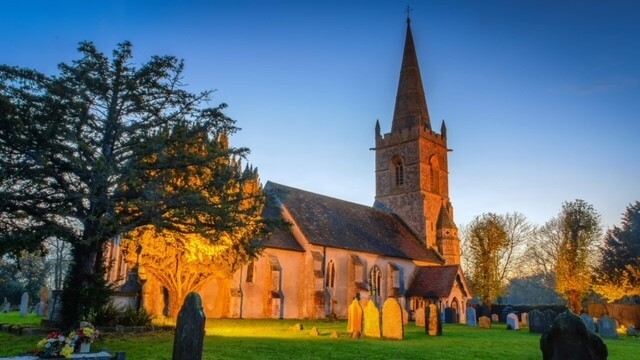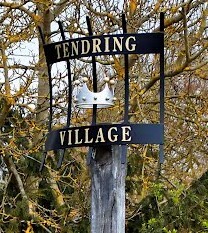Tendring Church - St Edmund, King and Martyr

Services
All are very welcome to our services. Currently, a service of Holy Communion is held on the second Sunday of each month at 9.30 am. Additional services will take place at particular times of the church calendar including Christmas and Easter.
Since 2022, the Parish of Tendring has been in a group of nine rural parishes in the Deanery of Harwich. The two Curates-in-charge, Reverend John Saxon and Reverend Phillip Young have the role of ‘Rural Missioners’ and share the pastoral responsibility for the nine parishes.
For up to date information about the services at this church and the other nearby churches in the group, please see the website: www.mozebenefice.org.uk
Reference can also be made to the Village Magazine for monthly information about church services and other activities.
Visiting
For those wishing to enjoy this beautiful place, outside of normal services, the church is open daily. Visitors can absorb the history, have a moment for quiet prayer, or just take time to reflect.
Events
Anyone wishing to make contact with us in order to arrange a baptism, wedding or funeral in the church, can contact the Parish Administrator, details below:
Deb Turner, Parishes Administrator. Please email on harwichrm@gmail.com or telephone 01206 322136.
Fundraising activities, such as coffee mornings are also held in the church from time to time. Anyone wishing to arrange an event in the church should also contact the Parish Administrator in the first place.
History
This beautiful church building has been lovingly maintained and cared for over the past centuries and this continues to this day. You may like to know some of the deep history which is summarised below:
The parish church is dedicated to King Edmund who was martyred in Framlingham in 869. The earliest parts of the present church are Norman, with walls built from septaria, a mudstone found in the cliffs at Wrabness, and also used in the construction of Colchester castle.
The entrance porch is 14th century and still contains some original richly carved timbers.
On entering the church a decorative wooden casing can be seen around the arched doorway opposite, with a similar one surrounding the entrance door. These wooden arches are probably unique and were formed to support a large beam that once supported a 14th
century bell-cot. In 1876 a new tower and steeple were built to replace the unstable bell-cot. The large beam was then modified by the removal of its centreportion, giving it the appearance of a hammerbeam.
Extensive restoration was carried out in the mid to late 19th century. In addition to the new tower and steeple, the south aisle was built; the east wall and window were rebuilt, the chancel arch constructed and the interior was fitted out.
A walk up the aisle shows two windows in the north wall of the nave. The first is in memory of Lieutenant Gerald Arthur Hervey who died in the Battle of Ypres aged 36 years. Although he lived with his wife in Surrey, his parents lived at Church House, Tendring. The window was the work of Horace Wilkinson. The second window, near the pulpit, contains a piece of
medieval glass (red).
The 13th century chancel, with its later barrel-vaulted roof, contains several memorial tablets to former rectors, including Maurice Percy McCready, Rector 1933-1945, who was Honorary Chaplain to King George V. The western-most chancel window is in memory of members of the Hervey family who lived in Church House. The east widow is in memory of John Chapman, Rector 1838-1878. During Revd Chapman’s incumbency, an Ecclesiastical Census of 1851 recorded church attendance at 160 in the morning and 219 in the afternoon. The seating capacity in the church was held to be 407; today it is about 150. The value of the living at this time was very high. Mr Chapman received £989 from his glebe, tithes and fees.
To the right of the altar is an alabaster kneeling figure, a memorial to Edmund Saunder who died 5th November 1615. His eldest daughter Ann was married to Sir John Drury of Bretts Hall, Tendring. The figure is wearing civilian dress of Shakespeare’s time.
The building of the organ was started in 1913 but not completed until 1958 because of the outbreak of the First World War. An organ recital by Dr Harold Darke who wrote ‘In the bleak mid-winter’ marked the culmination of the build.
A walk to the back of the church shows the 16th century font. As previously mentioned, the tower and spire were built in 1876 by John Cardinall, Lord of the Manor. The west window, at the base of the tower, is in memory of his sisters Sarah and Elizabeth and contains the Cardinall family crest. Four early 17th century bells from the bell cot were re-hung in the new tower and rung from the ground floor. These rather light bells were then melted down and replaced in 1907 with a new peal of six heavier bells; inscriptions are recorded on the brass plaque behind the font. These bells were re-hung on new bearings in 1999.
